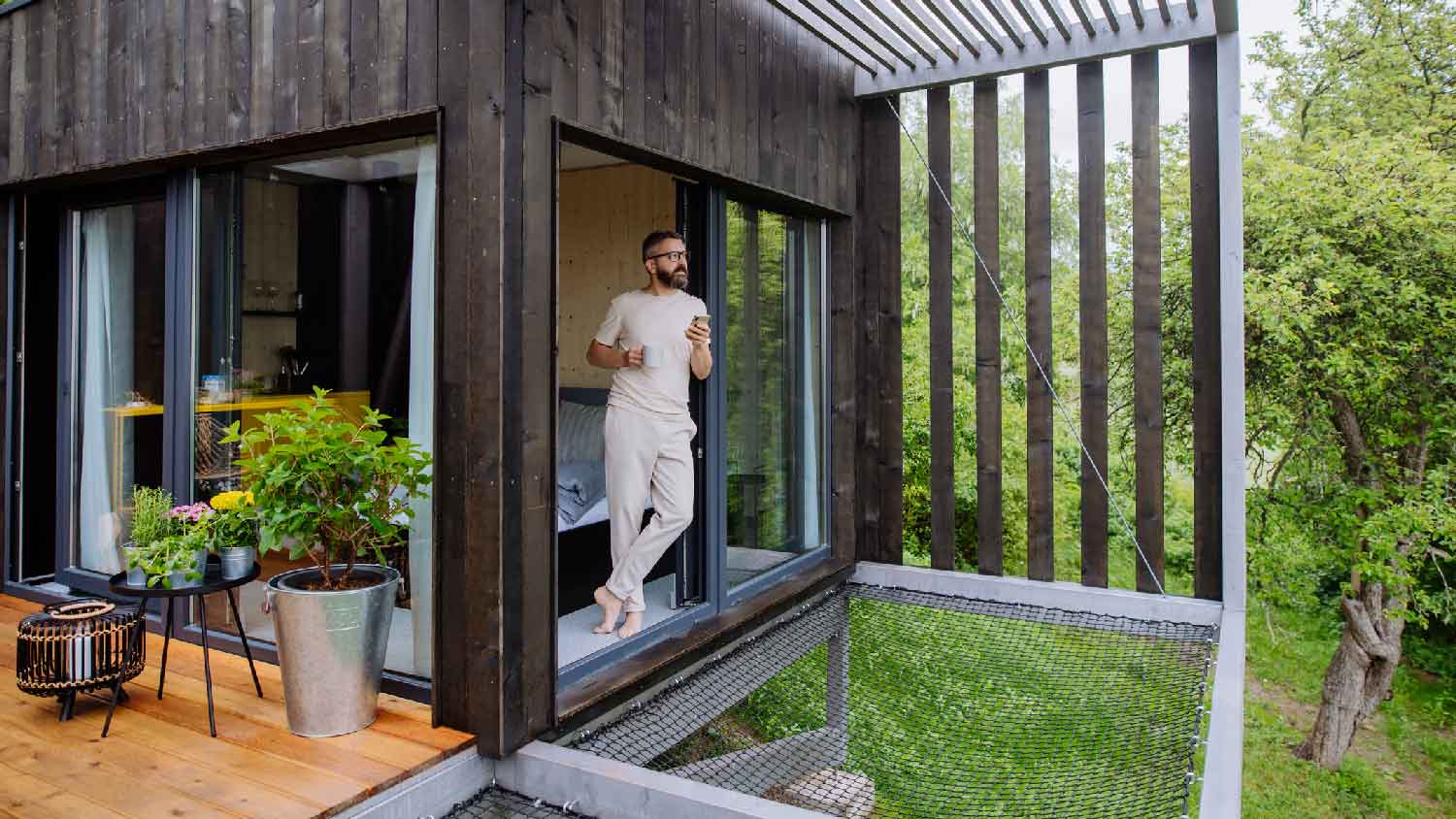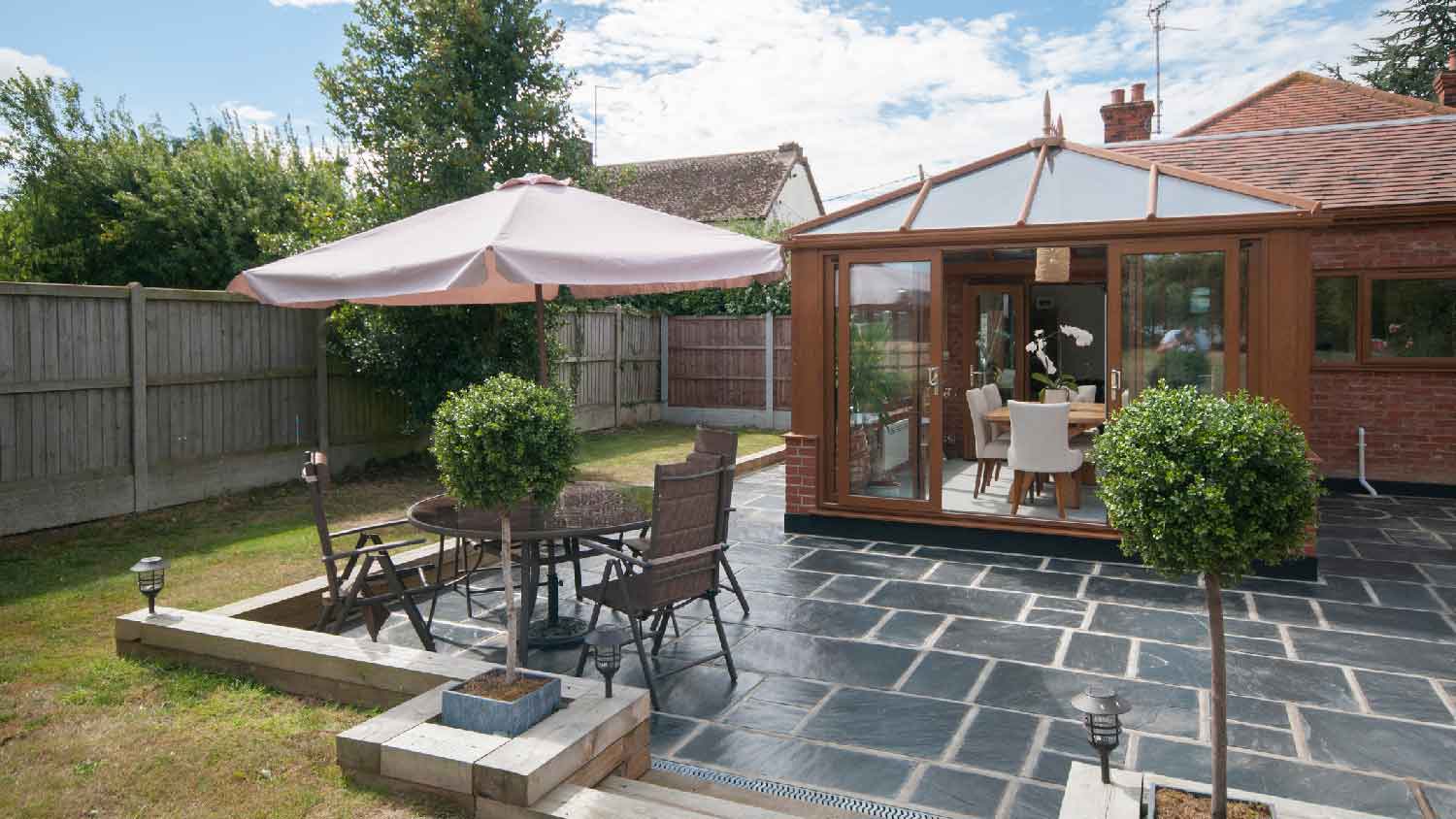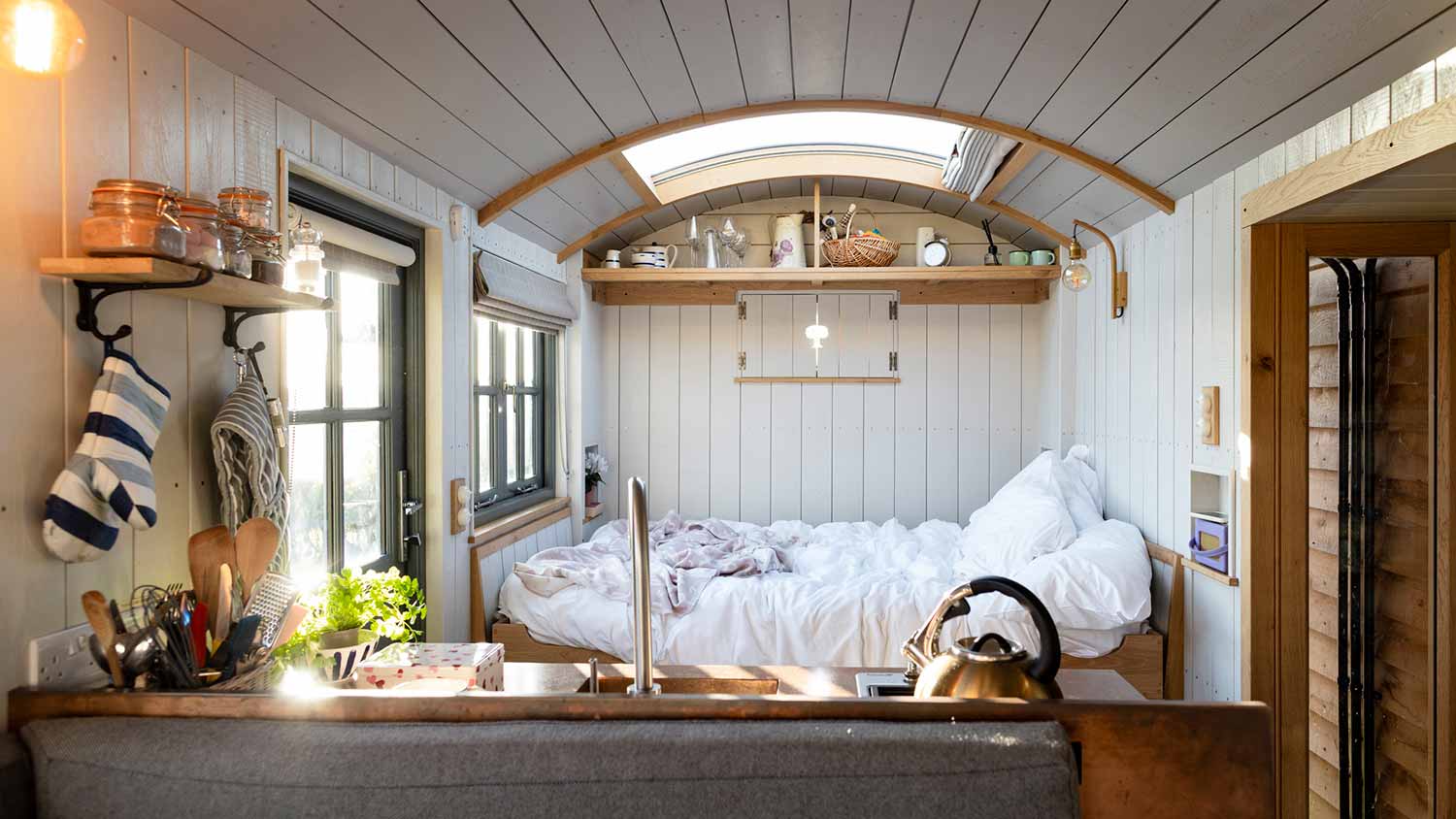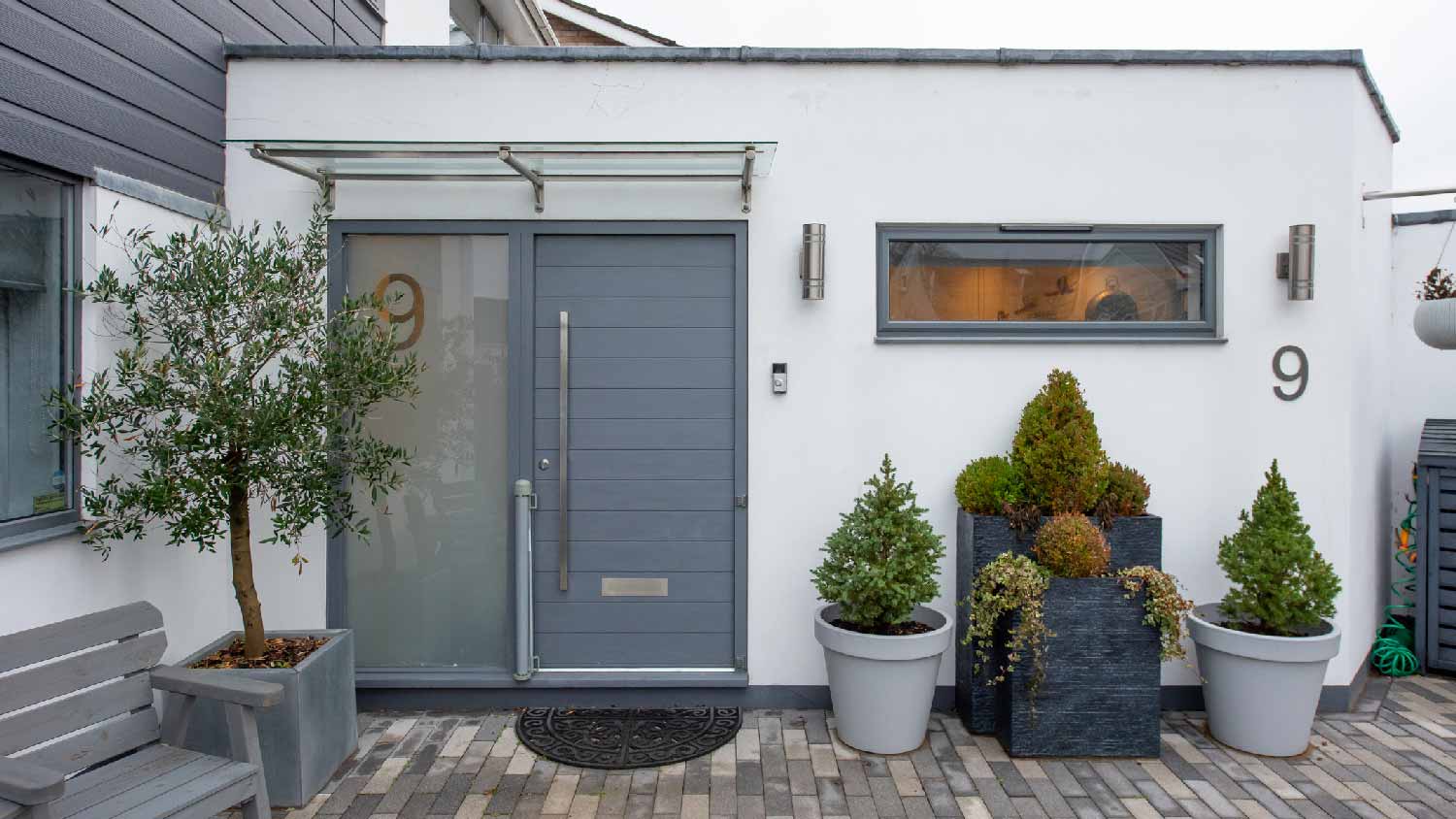
Various factors affect the total tub-to-shower conversion cost, including the size of the area, type of shower, materials, and labor fees.
These small spaces have some big differences


ADUs and tiny houses are both small, freestanding structures used for living space.
ADUs are secondary structures on the same property as primary occupancy residences.
A tiny home may be the only residence on a property, and it may be a fixed or mobile structure.
ADUs are subject to zoning regulations and building codes, but tiny homes’ legal guidelines can vary widely.
Smaller living options like accessory dwelling units (ADUs) and tiny houses have become popular options that pack a lot of possibility into a small amount of square footage. Although these two compact types of spaces have a lot in common, they differ in function, legal status, and location. Learn the differences between ADUs and tiny houses so you can decide which mini housing option is right for you.
ADUs and tiny houses share a lot of characteristics, but differ in a few key ways. ADUs are permanent secondary structures built on a property with a separate primary residence, while tiny houses may be fixed or mobile and are often standalone residences on a property. ADUs are regulated by local building codes and zoning laws, while tiny homes may encounter regulation issues depending on location. ADUs often tap into the primary residence’s utilities, and tiny homes may use off-grid solutions for self-contained functioning.

An ADU is a permanent secondary housing unit constructed on a foundation on the same property as a primary residence. There is a wide range of types of ADUs, used for everything from in-law apartments and long-term rentals to studio space, detached home offices, and more. ADUs may be an addition that’s fully attached to the home—although by definition with a separate entrance—or they can be completely detached elsewhere on the property.
| Pros | Cons |
|---|---|
| Increase property value | Highly regulated |
| Flexible usage | High upfront costs |
| Can add significant living space | Space constraints in smaller yards |
Best for:
Homeowners looking to add living space or rental income
Those with spacious backyards to allow for privacy between primary residence and ADU
Homeowners who want a permanent option with flexible usage
An ADU adds value to your property by increasing the usable living space and potentially providing rental income. When comparing an ADU vs. an in-law suite, the ADU allows for privacy and independent living close to the main residence. ADUs can be used for a wide range of functions, so you can customize them to fit exactly what you need.

Since ADUs are permanent structures, they’re subject to all local building and zoning regulations, so you’ll need to make sure they’re built legally and in compliance with building codes. ADUs can be costly to build—they’re built to the same standards as homes, and they can cost around the same as the cost to build a house per square foot. In smaller yards, an ADU may significantly limit yard use or feel cramped, so it may be a better option for larger yards.

A tiny house is a freestanding structure that can be permanently built on a foundation or made to be mobile and moved from place to place, similar to an RV or mobile home. Tiny houses may be the only residence on a property or may be constructed as a secondary residence on larger properties. There’s no shortage of tiny house ideas, styles, layouts, and customizations, so you can design and build a tiny house that meets your exact needs.
| Pros | Cons |
|---|---|
| Mobile | Complex legality |
| Customizable | Low ROI |
| Lower upfront cost | Self-contained utilities |
Best for:
Those looking to relocate frequently
Homeowners who want a smaller environmental footprint
Handy DIYers who want to build their own housing
Tiny houses are a great option for those who want a comfortable home base with the freedom to relocate, or for those looking for a permanent housing solution with a smaller environmental footprint than a traditional home. Tiny houses are fully customizable and offer a lower upfront cost per square foot than traditional homes and ADUs.
The flexibility of a tiny house can be complicated by its often confusing legality. Regulations for tiny homes vary widely by location, which can be an issue if your tiny house is made to move between different locations. The unclear legality can lead to residency complications and permit issues. For those who like all the comforts of home, tiny houses’ self-contained, off-grid utilities may feel more like camping than relaxing at home.

Still trying to decide between these two diminutive dwellings? See how they stack up in some common categories.
Tiny houses are generally limited to about 400 square feet, particularly if they’re built to be mobile. ADUs have more flexibility with size, with some municipalities allowing them to be up to 1200 square feet or more.
A tiny house costs an average of $30,000 to $60,000, while ADU costs range between $60,000 and $285,000 on average. The higher upfront costs for an ADU can be prohibitive for those looking for smaller living solutions.
Both ADUs and tiny houses can be blank slates for you to use in whatever way works for you. Both offer significant flexibility in design and function, allowing you to put your own personal mark on your tiny living space.
ADUs are permanent structures and must be built to the same standards as houses, so your best bet is to hire a local home addition contractor to ensure everything is up to code. Tiny houses are often built by the homeowners or prefabricated by tiny house manufacturers. To play it safe when it comes to tiny houses and regulations, hire a contractor who builds home additions or freestanding structures.
With the primary residence close by and hookups to utilities, ADUs offer all the conveniences of home on a smaller scale. Tiny houses need to be fully self-contained, which often means workarounds or going without some creature comforts.
Because ADUs are a permanent part of a property and are built to strict standards, you can expect them to increase your property value and offer an enticing option to prospective buyers. Tiny homes are a harder sell—the complexities around regulations and the lack of building standards may not bring as much of a return when it’s time to sell.
From average costs to expert advice, get all the answers you need to get your job done.

Various factors affect the total tub-to-shower conversion cost, including the size of the area, type of shower, materials, and labor fees.

The cost of installing a bathtub or a shower liner depends on the type of tub or shower, size, and features. This guide will show what you can expect to pay for your project.

Building a guest house is one of the largest home projects and involves several different professionals. Learn about the cost to build a guest house and where you can save.

When comparing a steam shower versus a sauna, some factors can impact which one is best for you, including installation, temperature, treatment, and cost.

An updated bathtub can give a bathroom a whole new look. Find out how much it costs to replace a bathtub in Dallas, TX, including prices by type and labor costs.

Undermounted sinks are elegant upgrades to any kitchen and can add to your home’s resale value. But are they the best option? Here we’ll learn the pros and cons of having an undermount sink.